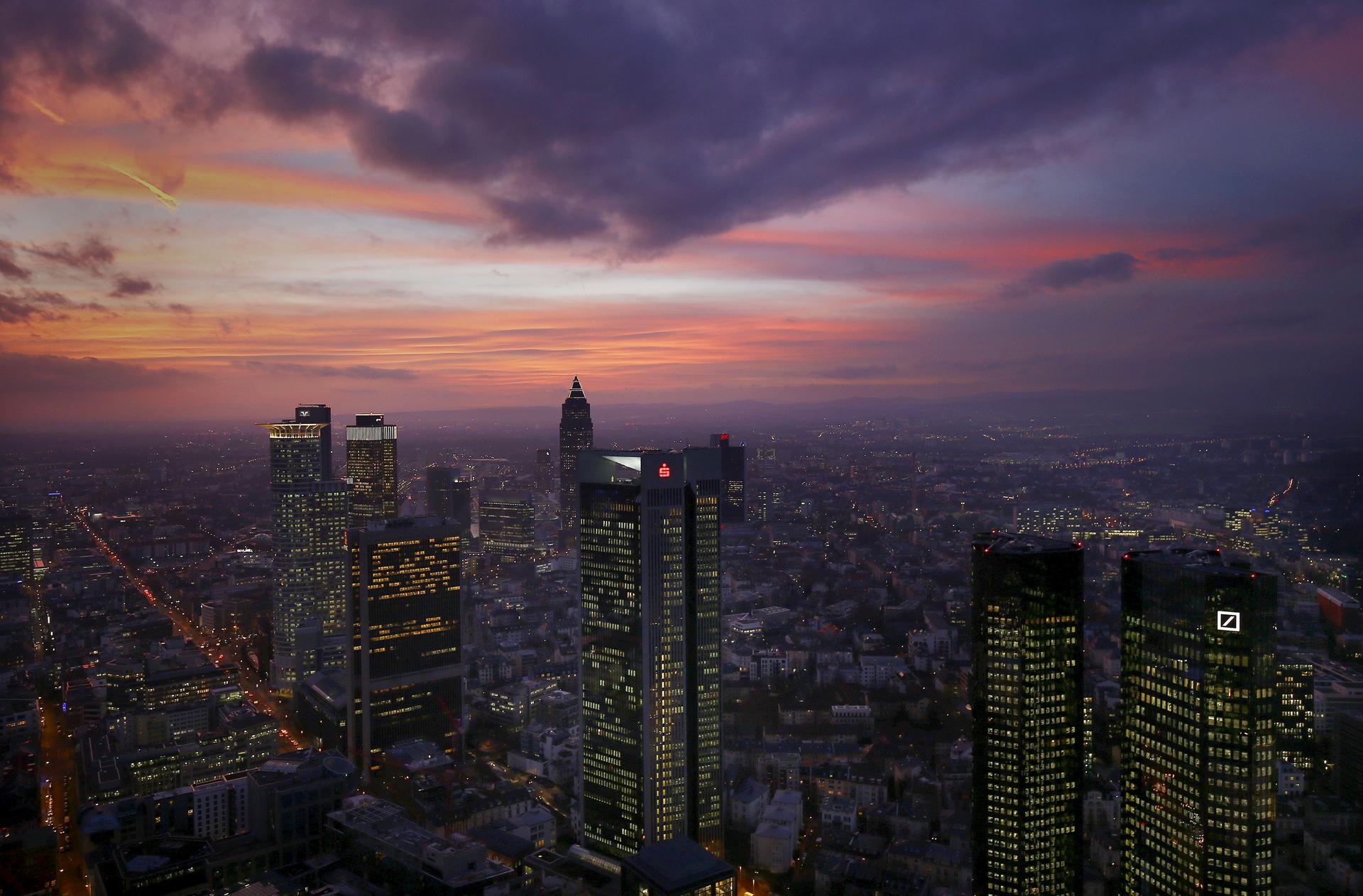The greatest cities in America have these traits in common
The skyline is photographed early evening in Frankfurt, Germany, January 26, 2016.
Turns out there are a few secret ingredients to making a city successful.
That’s according to author James Fallows, national correspondent for The Atlantic. Over the course of three years, Fallows set out on a 54,000-mile journey with his wife Deborah, a linguist and author, to survey the American heartland.
Traveling in a single-engine plane all across the country, the Fallows found a number of traits that make for happy, healthy, and prosperous communities.
Divisive national politics seem to be a distant concern.
In the course of their reporting, Deborah and Jim found that the locals they spoke to were not very interested in national politics.
“What people were really interested in talking about was their town, and the problems they were looking at and how they were solving them,” Deborah says. “It was clear to us from the get-go that these were towns where people were working together.”
By pushing aside the heated partisan rhetoric that comes with national politics, Deborah says that communities foster a collaborative environment with the goal of solving problems. If the national dialogue was heavily present in a local community, Deborah and Jim found that divisions grew, something that made problem solving difficult.
You can pick out the local patriots.
Known community figures that are publicly invested in a town or city can make all the difference, Jim says.
“We would go into some town and start asking a newspaper editor or a high school principal, ‘Who makes this town go?’” he says. “If there were names that immediately came to mind of people who were philanthropists, high school teachers, or developers who had taken a big stake in making the downtown function, it was sign that people knew … who felt responsible for the welfare of that place.”
People know the civic story.
Whether it’s a myth or a lie, America has its “story”—an exciting tale that includes the pilgrims hitting Plymouth Rock, Lewis and Clark in the American West, immigrants coming through Ellis Island, and more.
“There are certain cities that have a similar sense of themselves so that even someone that’s just arrived recently can think, ‘OK, here is the connection between what people did 50 years ago and what I’m doing now,’” says Jim.
They have a downtown.
“After the Civil War and through the 1920s and 1930s, America built a tremendous amount of classic, main street downtown,” says Jim. “Some of it was bulldozed in the ‘50s and ‘60s, but a lot of it is still there. The towns that seem to be working best are places that are restoring this, and that’s a big thing.”
The successful cities that Jim and Deborah visited were pouring resources into their downtown areas to attract young workers and families, who are moving to cities in droves. Some 2,000 communities have seen downtown revitalization thanks to the National Trust for Historic Preservation, Jim has reported.
They are near a research university.
Research universities present “tremendous advantages” to a city or town, Jim says.
“I describe them as sort of being the equivalent of a natural port,” he says. “You have students coming from around the country, you have professors coming from around the world, and you have the real phenomenon of start-up industries being spun off from it.”
When a city can claim to have some of the best and brightest, businesses and economic activity usually follow, Jim says.
They have and care about a community college.
Community colleges are key to growing the economy and expanding opportunity, something The Takeaway has reported on with its Community College Challenge.
“I’ve started thinking that community colleges are the big thing in American education,” Jim says. “That’s where the actual growing category of well-paid, blue collar jobs—like robotics technicians, welders, and those kinds of things—are matched with people who now have low-paying service sector jobs.”
As the manufacturing jobs of yesteryear vanish, community colleges are helping people gain new skills in other areas, Fallows says.
They have craft breweries.
No, this isn’t just about hipsters.
“The reason that it’s more than just a joke is that craft breweries, and now craft distilleries, are even more than [about attracting] locavore food and coffee shops, they are proxy for a certain cultural change,” Jim says.
If a city has a craft brewery, it also likely has entrepreneurs and a community that fosters a “start-up mentality,” Jim says.
“They become significant businesses in a lot of places,” he says. “It sounds crazy, but see if you can find an exception, as you travel around, of a city that’s on the way up that doesn’t have a craft brewery or now a craft distillery.”
While Jim favors breweries, Deborah says that she would have chosen a different indicator.
“We were having a little tussle over that,” she says. “In every town that we went to, you could find a river walk—even if they didn’t have a river. To me it was sign that they wanted to make their town a nicer place to live; a place where the public could go out and enjoy themselves. River walks and brew pubs kind of go into the same category. They’re part of the same thing: Improving the texture of the town.”
Click here to see the full list of traits created by the Fallows.
This story was first published as an interview on PRI's The Takeaway, a public radio program that invites you to be part of the American conversation.
